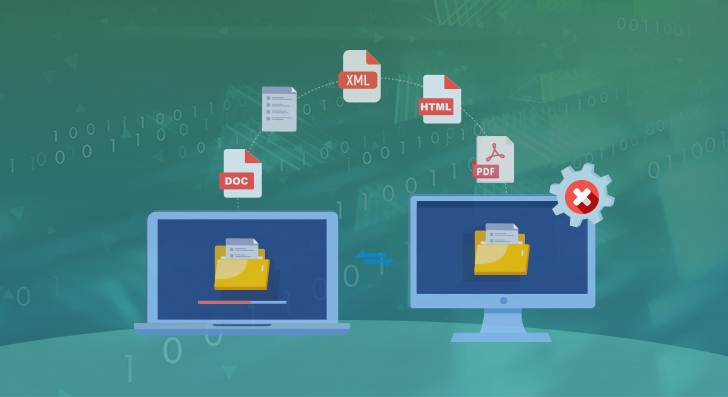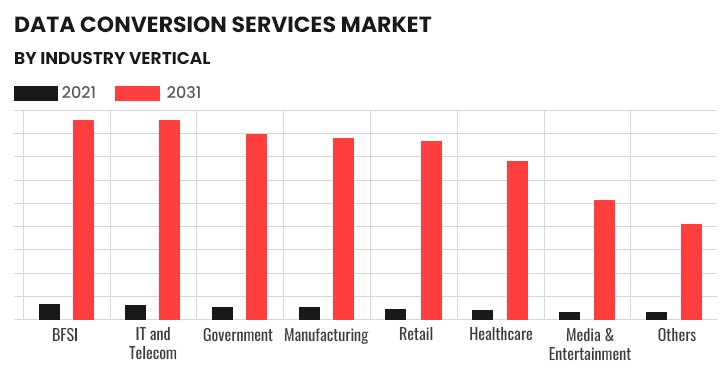Data conversion is an essential process in the digital age, where data is constantly transferred, transformed, and analyzed. Whether you’re migrating data between systems, preparing it for analysis, or sharing it with colleagues, data conversion is a common task. Business critical data often comes in multiple formats such as web-based data, PDFs, images, catalogs, periodicals, and more. With this diversity comes the persistent challenge of format compatibility, making the analysis and interpretation of disorganized data difficult. This necessitates the use of data conversion services. In this blog, we’ve highlighted the top 7 data conversion mistakes that firms should avoid. As a data conversion specialist, we also have provided the best practices which can solve them.

Across the Spectrum: Data Conversion Use Cases
While data conversion is a crucial component of data processing, it also plays a pivotal role in maintaining data integrity and compatibility. Compatibility here refers to the seamless integration of data into different processes, whether it’s migrating to a new database, upgrading software, consolidating data from multiple sources, or simply storage. Here’s how different industries use the data conversion process:
- Telecommunication and networking firms, such as NETFLIX, depend on vendor-independent input and output methods for the conversion of media files.
- Insurance companies leverage the data conversion processes within their medical billing procedures to expedite claims settlements.
- Digital marketing companies leverage digitized market research and its results to formulate winning marketing strategies.
- Healthcare industry relies on data conversion to manage patient information, minimize clinical errors, schedule appointments, and check hospital inventory.
Stats also convey the vitality of data conversion, which was initially valued at US $ 39.8 billion in 2021. The data conversion services market is projected to reach a market share of US $ 566 billion by 2031 with a CAGR of 30.6%.

Image Description: As the sole purpose of data conversion is to facilitate interoperability and maintain all data with as much embedded information as possible, its usage spans across numerous industries as mentioned.
Common Data Conversion Mistakes
At the same time, numerous pitfalls can derail this process, leading to data loss, errors, and operational disruptions. So, here’s what you should avoid during the data conversion process in order to ensure a successful transition:
1. Insufficient Planning and Documentation
One of the most common and detrimental mistakes during data transformation is inadequate planning and documentation. Companies often underestimate the complexity and scope of data conversion projects, resulting in rushed implementations and overlooked details. Appropriate planning and proper documentation are essential to ensure that data mapping, transformations, and validation rules are thoroughly defined and understood by all stakeholders.
Solution: Begin by creating a comprehensive project plan with details including timeline, resource allocation, and clear objectives. Document all data sources, formats, and transformation rules, and maintain a well-organized repository of documentation for future reference.
2. Neglecting Data Quality Assessment
Failing to identify and address data quality issues before conversion can lead to disastrous outcomes. Inaccurate or incomplete data can propagate errors throughout the conversion process, causing significant business disruptions and damaging your company’s reputation.
Solution: Before diving into data conversion, conduct a thorough data quality assessment. Identify and rectify inconsistencies, missing values, and redundant records. Implement data cleansing and validation procedures to ensure data integrity.
3. Overlooking Data Backup and Recovery
Data conversion is not without risks, and data loss can occur due to various unforeseen circumstances such as system failures, human errors, or software glitches. Neglecting data backup and recovery strategies can have severe consequences, in terms of lost information and opportunities.
Solution: Implement a robust data backup and recovery plan. Regularly backup all data and keep multiple copies in secure locations. Test data recovery procedures to ensure the quick and accurate restoration of data against unexpected incidents.
Ensure Zero Information Loss With Our Data Conversion Outsourcing services
4. Underestimating Data Mapping Challenges
Data mapping, which is the complex task of aligning different data fields from one or multiple source(s) to the target system, is equally essential to convert data from one format to another compatible format and avoid errors. Underestimating the challenges involved can lead to data truncation, data mismatches, or misinterpretation of information.
Solution: Invest time and efforts in a detailed data mapping exercise. Clearly define the mapping rules, validate them with stakeholders, and use data mapping tools to automate and streamline the process.
5. Lack of or Limited Testing
Testing is crucial in any data conversion process and rushing through the data conversion process without comprehensive testing is a recipe for disaster. Failing to validate the converted data in a controlled environment can lead to critical issues being discovered too late, causing delays and cost overruns.
Solution: Develop a robust testing plan that includes unit testing, integration testing, and user acceptance testing. Verify data accuracy, integrity, and functionality at each stage of the conversion process. Involve stakeholders actively in the testing phase to address the issues promptly.
6. Neglecting Compliance and Data Security
The current regulatory landscape demands organizations to adhere to strict compliance and data security standards. Neglecting these aspects during data conversion might result in legal and financial repercussions as well as dent a company’s reputation.
Solution: Ensure that data protection and compliance requirements are incorporated into the data conversion process. Implement encryption, access controls, and auditing mechanisms to safeguard sensitive data. Conduct compliance audits to verify adherence to relevant regulations.
7. Overlooking Data Validation
Data validation is a crucial step in ensuring data accuracy and integrity during the conversion process. Overlooking this step can lead to data discrepancies and erroneous conclusions, which can negatively impact the organization’s decision-making.
Solution: Implement robust data validation checks at every stage of the conversion process. Use automated tools to verify data against predefined validation rules and flag any discrepancies for immediate resolution.
Final Words
Data conversion services bridge the gap between incompatibility and comprehension. It makes the data intelligible for business, helping them drive growth and success. Further, the growing demand for low-latency, real-time access, and analytics of operational data, paired with growing volume of data within the enterprise makes data conversion an essential business tool.
Investing time and effort in proper planning, documentation, DQ assessment, backup and recovery strategies, data mapping, testing, and data validation enables businesses to mitigate risks and establish a streamlined, error-free data conversion process. Remember, successful data conversion hinges on a harmonious blend of technology, well-defined processes, and collaborative efforts–it’s the key to unlocking long-term growth.





